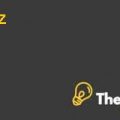Critical Issues
The major or the critical issues presented in the case are as follows:
The Children’s Place has shifted from being a clearance centre model to anoutlet model where it emphasized on its own brands. This was a decision to negate the price competition.
With the issue or the debacle of Rana Plaza Building in Dhaka, the company was found in debris.
The company had to rethink its strategy because of the concern that has been faced by the company in the Rana Plaza debris.
Situation Analysis
The Children’s Place was founded in 1969 at Hartford, Connecticut where it was founded by two graduates of Harvard Business School. By the year 1981, the company has had 61 stores. The company became a public limited company in the year 1997 where it registered itself in NASDAQ. The revenues recorded for the company as per the fiscal year 2013 have been reported as $ 1.766 billion, whereas the net income in the same period has been $ 53.026 million.
As the case states, the CEO of the company revised the growth strategy for TCP where the major priority for the company has been to offer store optimization, international expansion and a better service in the supply chain management of the company. Since the company has been underperforming for the for a long time, it has planned to close down stores by the end of 2016 and in fact launch value centres across the country.
The financials of the company indicate that the second quarter of the company has been a less profitable one, whereas the fourthquarter has been usually the most profitable one for the firm. The economic and the financial distress in the recent past has been one of the major causes of concern for the company.
The company has been outsourcing most of its production facilitates to the retailers such as India, China, Bangladesh, Vietnam, etc. These have been the regular customer markets for the United States apparel brands because of the low production cost, low raw material cost and quality on time delivery was a part of their business because of the constant efforts of the rival suppliers to outclass the other players.
As the case states, the situation got tough and in fact an incident struck where Rana Plaza building collapsed, which made a lot of casualties and it is still considered to be the worse incident in the apparel indsutry.
Decision Criteria
To reduce the dependency on the third party suppliers
To overcome the loss of revenues in the second quarter specifically
To offer customized land to produce goods for TCP
Option 01:
Based on the information that has been provided in the case, the first and the foremost alternative for TCP would be to reduce the dependency on the third party suppliers to manufacturer on behalf of the company. As the industry has become highly competitive, where rivals are offering discounted prices to gauge in customers, therefore to sustain in the market and to bring in uniqueness in the company’s product offerings, the management should control the manufacturing in-house. The company should setup a factory in local region of Bangladesh and proper and produce goods and apparels under the supervision of the management itself. This way the company would be able to produce high quality stuff which can bring in more revenues and increase customer satisfaction. Along with this, the idea of being a part of Bangladesh market would help the firm in gauging in Asian markets also and prepare goods for the nearby markets of India, Pakistan and Sri Lanka which holds decent purchasing power.....................
This is just a sample partial case solution. Please place the order on the website to order your own originally done case solution.













